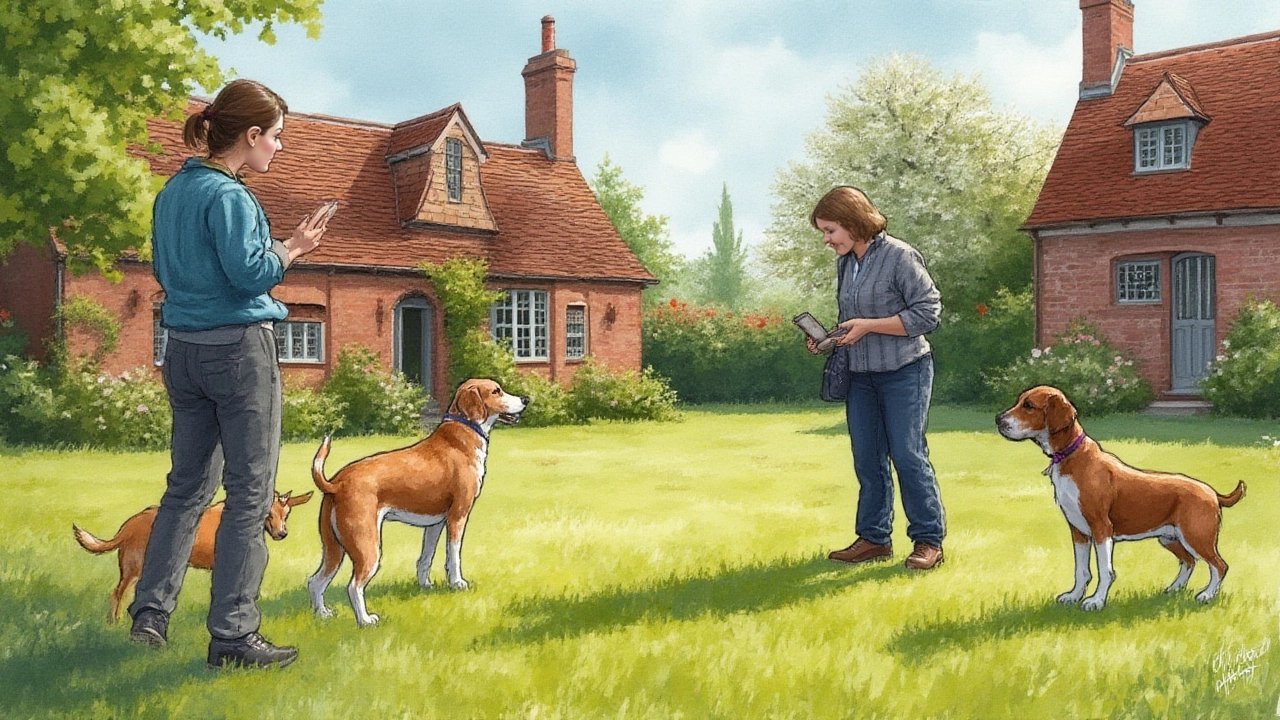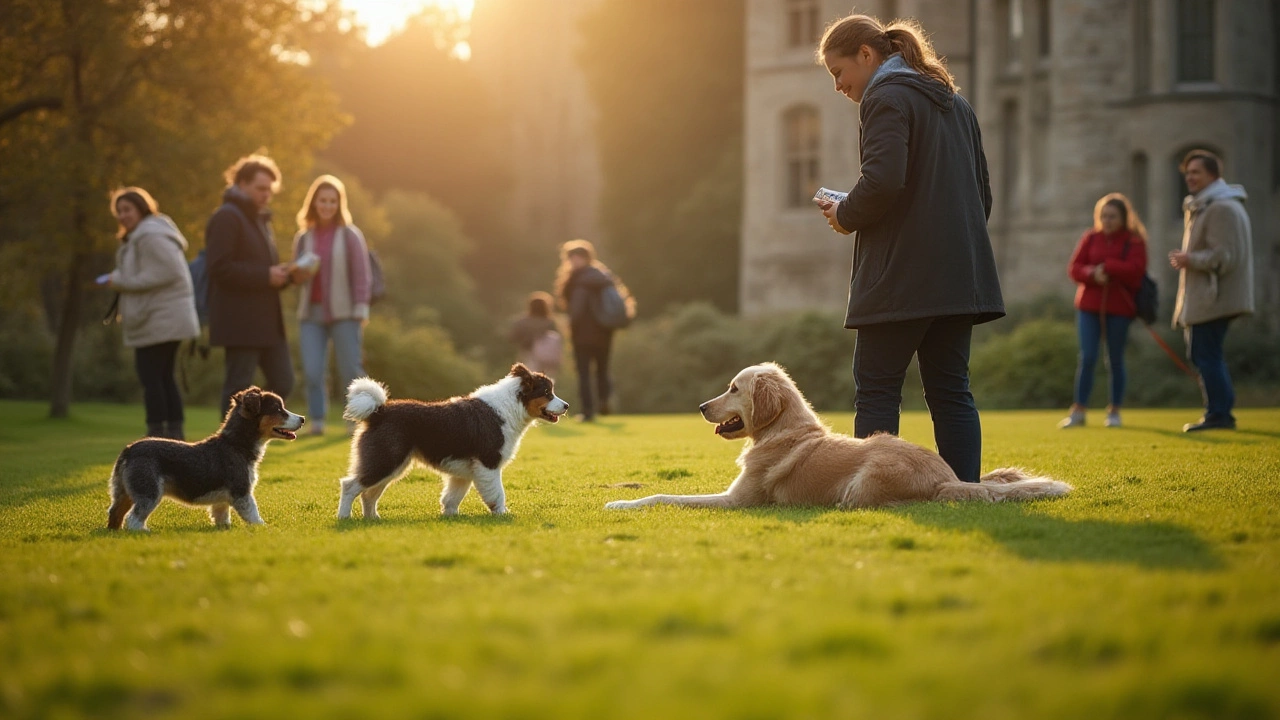If you’ve ever tried teaching your dog to sit for more than ten minutes, you’ve probably seen that blank, zoned-out stare. Here’s a shocker: the length of your training session can make the difference between a focused pup and a spaced-out furry friend. Trainers and animal behaviorists have spent decades figuring out the sweet spot for training time, and it turns out, longer isn’t always better. Some dogs learn best in quick sprints; for others, it’s all about consistency over marathon sessions. With attention spans so different from ours, dogs don’t fit our classroom models. Let’s sort out what really works with real numbers, proven science, and honest tips to keep your sessions fun, effective, and far from boring.
Why Session Length Matters in Dog Training
The temptation to squeeze an hour’s worth of obedience into one go? Strong. But truth is, a dog’s brain just isn’t wired that way. Unlike humans, dogs—whether young puppies or old-timers—have fairly short attention spans. A published 2021 Australian study measured canine learning speed and attention, showing that most average adult dogs max out after about 10 to 15 minutes of focused effort. Puppies? Even less, sometimes just 3 to 5 minutes before their minds wander. Push past that, and not only do you lose their interest, but training can actually make things worse: cue frustration, stress, and even negative association with learning time.
Think of training sessions like workout sessions. No one expects six-pack abs from endless crunches in one afternoon. It’s the repetition, the short bursts mixed with rest and positive feedback, that gets results. When dogs repeatedly ‘win’ in training—whether by a treat, play, or praise—they stay motivated, remember better, and build positive connections. So, the human impulse to drill behaviors for thirty, forty, or sixty minutes straight? It often turns training into a tedious task, not an engaging learning experience. This is especially true in multi-dog households, where patience is thin and energy levels tumble fast if lessons drag on.
A tip from pro trainers in Auckland: set a timer or play a favorite song as your session clock. When it ends, so does the session. This keeps things light and gives your dog the clear message that training is just a part of daily fun—not an endless sit-and-stay marathon. Dogs also associate routines with positive emotions when they know what to expect and when things will wrap up. So, instead of fretting about cramming all the commands into one session, aim for frequent, shorter, and more lively interactions.
Ideal Training Durations by Age and Personality
No two dogs are the same, so yes, ideal session time isn’t one-size-fits-all. The research-backed basics go like this: puppies (up to six months) thrive with 3 to 5-minute sessions—think quick games and instant rewards. Adolescent dogs (six months to two years) can handle 5 to 10 minutes, and adult dogs typically peak at 10 to 15 minutes before their minds start wandering. Elderly dogs or those returning from injuries may show more fatigue or frustration if you stretch sessions out, so opt for a handful of 3 to 8-minute bursts scattered throughout the day for them.
Breed matters, too. Border Collies, Australian Shepherds, and Belgian Malinois are notorious for their sharp minds and stamina, allowing for slightly longer training sessions. Brachycephalic dogs (think Bulldogs, Pugs) or chilled-out Basset Hounds? They check out early—five minutes is usually plenty. Even individual temperament plays a huge role. My own lab mix, Max, can power through ten minutes on scent work, but two minutes into leash training? He’s got other plans.
Take note of how your dog reacts during training. If they start yawning, sniffing aimlessly, licking their lips, or turning away, those are reliable signals that their mental energy is heading south. Mix it up—switch to play, offer water breaks, or just finish on a high note and resume later. Keeping training fresh and fun ensures progress rather than boredom. Never push a tired or disengaged pup, as you risk turning learning into a dreaded routine rather than a highlight of their day.
Wondering what actual session schedules look like? Here’s a simple table with widely recommended durations:
| Dog Age/Breed | Recommended Session Length | Frequency per Day |
|---|---|---|
| Puppy (2-6 months) | 3-5 minutes | 3-6 times |
| Adolescent (6-24 months) | 5-10 minutes | 2-4 times |
| Adult (2+ years) | 10-15 minutes | 1-3 times |
| Working Breeds | 15-20 minutes | 1-2 times |
| Senior/Low-Energy Dogs | 3-7 minutes | 2-3 times |

Science-Backed Ways to Tell If Your Sessions Are Too Long
We’ve all been there—pushing that extra five minutes, convinced just one more ‘heel’ will click. But real progress depends on knowing when to call it quits. A University of Lincoln study showed that dogs retain new commands better with “spaced” learning—multiple short bursts rather than one exhausting stretch. Stress hormones like cortisol climb when dogs feel overloaded, which makes them less likely to absorb new information.
Watch your dog’s cues closely. Some will start pacing or fidgeting. Others withdraw, get sluggish, or start panting even in cool weather. Look for small but telling signs: a sudden keen interest in something else, a shift in body language, or even a stubborn delay in response time. These are classic clues the session’s dragging.
Give your dog mental “recess” during lessons. I like tossing in a quick game of tug or fetch every few minutes for my spaniel, Bella. Instantly, her focus snaps back when it’s time to resume training—they treat it like a reward rather than another task. If your dog struggles to recall a cue or hesitates with previously learned commands, odds are the session’s gone beyond their ideal limit.
For the numbers-obsessed, professional trainers sometimes use a “success percentage” trick: count how many commands are followed correctly in a row. If you dip under 60% success on easy basics, wrap up for the moment and celebrate small wins. That teaches your dog—and you—that short but sweet beats long and dull every single time.
Quality Beats Quantity: Making Every Minute Count
Sure, you can clock in thirty-minute training blocks, but if the vibe’s sluggish, it’s wasted time. Quality trumps quantity, always. Meaningful sessions load up on positive reinforcement: favorite treats, real-time praise, and a lively energy. Rewards keep motivation alive and, as a bonus, help your dog retain each lesson for the long haul. Studies from the University of Helsinki show that even “difficult” dogs respond better to a high-reward, short session model than to harsher or drawn-out approaches.
Dogs have what scientists call “episodic-like memory.” They link actions with rewards and context, but only if those moments stand out or end on a sweet note. That means your five-minute lesson—if packed with excitement and engagement—will outlast a painful slog through endless repetitions. If you’re trying to fix a tricky behavior, like reactivity or stubborn barking, try micro-training sessions: thirty seconds of focused work sprinkled throughout daily walks or playtime.
Switch up locations, tones, and rewards. Use a mix of treats, play, and affection—different rewards keep anticipation high. Here’s a tip: mark the “end” clearly with a phrase like “all done!” so your dog knows the session is over. They love routine and clarity. Smart toys or home obstacle courses can break up the monotony, tapping into natural problem-solving skills and giving their brain a bonus challenge between sit-and-stays.
If life gets chaotic (and let’s be honest, when doesn’t it?), tack a five-minute lesson onto your daily routine—while waiting for the kettle to boil or during an ad break in your favorite series. Those mini-sessions add up all week, and your dog will race to engage every time you reach for the treat pouch.

Trainer Tricks and Everyday Routines That Work
Seasoned dog trainers all agree: short, steady, and positive is the recipe for a well-behaved pup. If you’re juggling work calls, errands, and a family like Gavin and I do, consistency matters more than clocking marathon hours. Treat training like brushing your teeth—quick, regular sessions make habits stick for life. Find those natural pockets of spare time—waiting to head out for a walk, before dinner prep, or after a backyard play session. Dogs latch onto these rituals and, pretty soon, they’ll start offering polite sits or downs before you even ask.
Make a habit of ending on a win. Even if it’s been a bumpy five minutes, finish with an easy cue your dog can nail so both of you walk away feeling good. If a session flops, don’t sweat it: tomorrow’s another shot. Film yourself and your dog every now and then—review the footage to spot when focus drops or when your timing could improve. Trainers often review body language as much as timing.
Rotate through “fun days” with nosework games, quick agility drills, recall races, or easy trick sessions. Mix up treats with favorite toys or play—many dogs actually work better for a squeaky ball or tug rope than a biscuit. Enlist pals with other dogs for mini group lessons—peer pressure encourages friendly competition and focus. If you hit a plateau, try switching up the environment: the same lesson feels brand new outside, at a park, or even in a different room.
Here’s your checklist for nailing session timing every week:
- Stick to age-appropriate time limits, adapting for your dog’s personality each day.
- Mix up commands so sessions stay lively, not repetitive.
- Incorporate play or cuddles between lesson bursts.
- Document progress with notes or quick videos.
- End every session with a high note and a clear signal.
Your patience and flexibility is the glue that holds all of this together. Dogs love learning—the secret is making every moment feel like a game, not a chore. The best outcomes come from respectful, short, and consistent trainings rather than drawn-out drill sessions. So ditch the stopwatch, listen to your dog, and watch those tail-wagging results show up in ways that’ll surprise both of you.
